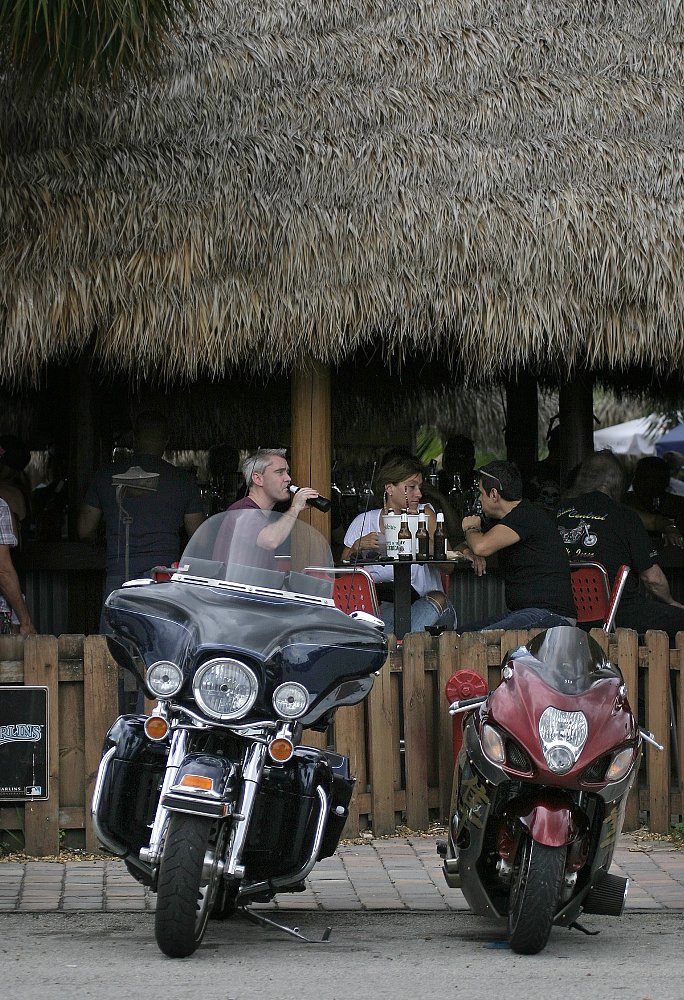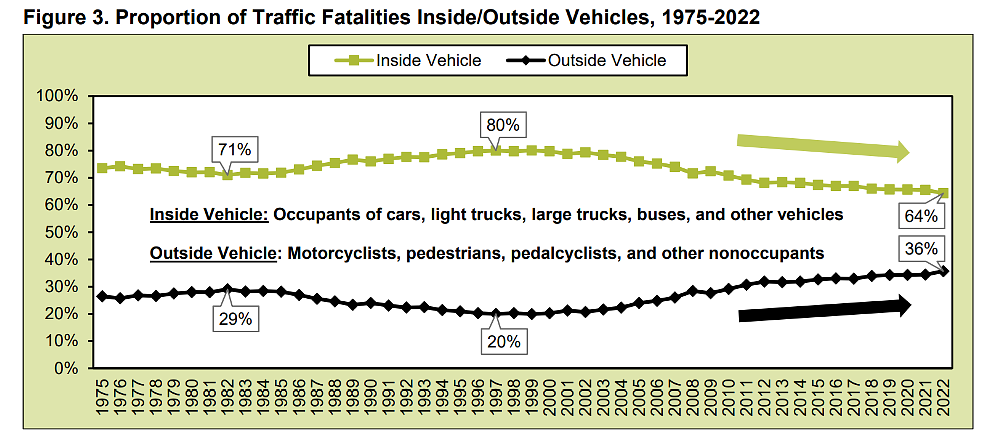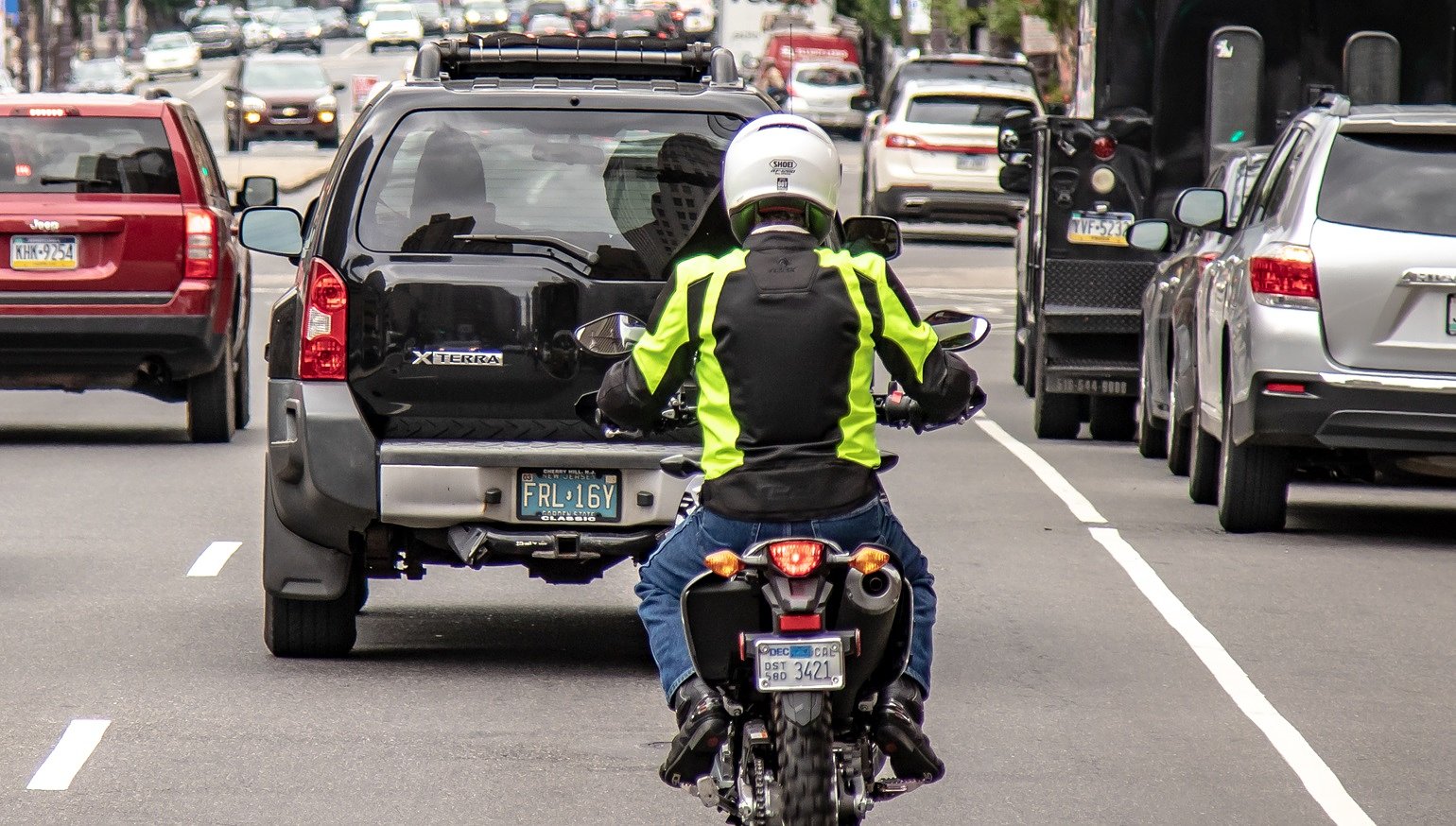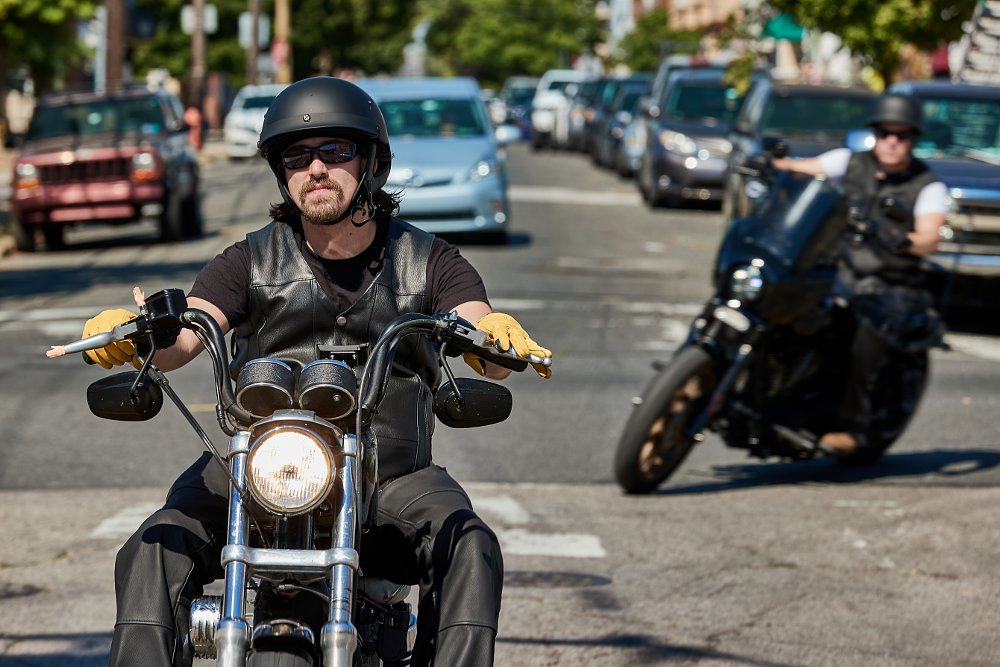The National Highway Traffic Safety Administration (NHTSA) has released its full overview of 2022 traffic crashes and its preliminary estimate of 2023 on-road fatalities and the news for motorcyclists is neither surprising nor positive.
The final statistics for 2022 show that the total number of crashes reported to police dropped 2.8% from 2021 even though estimated vehicle miles traveled rose by 2.0%. Overall highway fatalities were down 1.7% to 42,514 and the fatality rate per 100 million vehicle miles traveled fell by 3.6%. Meanwhile, motorcyclist fatalities increased by 1.2% over 2021 and accounted for 15% of all deaths on the road.
That was the picture for 2022. For 2023, we only have NHTSA's preliminary estimates so far and they only provide overall numbers, not a breakdown of the stats by category, such as the type of vehicle. So we can't yet deduce anything about motorcycles from that. The overall number of fatalities in 2023 was down 3.6% from 2022 but we'll have to wait for the final numbers to see if the recent trend continues: fewer people in cars and trucks dying, more pedestrians, bicyclists, and motorcyclists dying.
Three points caught my attention from the 2022 stats. Readers who have been following our coverage for a long time will realize none of this is new, but since we're talking about our lives on the line, I think it's worth revisiting. Here are my takeaways.

Drinking and riding: Still our own worst enemy
This is a topic I've pointed out for years, and it remains true. The number of motorcyclists involved in fatal crashes in 2022 who were impaired by alcohol rose 1.3% while overall fatalities involving drinking dropped 1.7%. That continues recent trends of disproportionate numbers of riders dying because they've been drinking, and the numbers continue to climb.
We all know why. For many people, riding is a social activity and that often involves some drinking along the way. Riding a motorcycle is more physically demanding than driving a car, but when you've had a drink or two, the first thing that goes is your judgment, and it's easier to convince yourself you're OK to ride if you "take it easy."
There's no point in going on about this, because we all know the score. The bottom line is that this is the one risk factor that is totally under our control. So it's easy to improve our odds.
Distraction: Hard to pin down
If you've noticed some messages about distracted driving lately, it's not a coincidence. NHTSA is in the middle of a $5 million media campaign (the video below is part of that) called "Put the Phone Away or Pay" that's targeting distracted driving and law enforcement agencies are supposed to implement high-visibility enforcement efforts today through Sunday, especially aimed at drivers age 18 to 34, who are the ones most likely to die in a crash related to distracted driving.
As motorcyclists, we often rage about the number of people on the roads who are paying too much attention to cell phones and not enough attention to driving. And we have reason. NHTSA reports that 19% of the fatalities in 2022 related to distracted drivers were people who were not in the car or truck, meaning vulnerable road users such as pedestrians, bicyclists, and motorcyclists.
On the other hand, the numbers are still smaller than you probably think. Just 8% of fatal crashes and 11% of all crashes were related to distracted driving. NHTSA defines distracted driving as diverting attention from driving to another task, so that's not just using a cell phone, but also adjusting the radio or climate controls, eating, or even talking to a passenger. Just 12% of those distracted driving fatal crashes were listed as involving cell phone use. So cell phones were blamed for for less than 1% of total traffic fatalities.
On the third hand, NHTSA admits that the distracted driving statistics could be inaccurate. NHTSA collects data from police reports and different jurisdictions have different ways of recording data about distraction. Plus, in the event of a fatal crash, there may be no way to know if a driver was looking at a phone or doing something else. A surviving driver may not give a truthful answer and there may be no witness accounts.
Those of us on the road on motorcycles are aware of the dangers and often have better visibility so we can spot drivers using a phone. We intuitively believe it's a real threat, and to some degree it is. But it's hard to pin down with precision.

Speculation: Bigger vehicles are killing us
This is my speculation, not NHTSA's findings, and I'm definitely not the first to suggest it. Plus, it fits with all the NHTSA data. I think the gradual decrease in passenger car and truck deaths and simultaneous increase in motorcyclist deaths — and much bigger increases in pedestrian and bicyclist deaths — can be partially explained by the increasing size of the vehicles on U.S. roads.
In 1992, the best selling car in the United States was the Ford Taurus. If a Taurus hit you on your motorcycle, odds are you'd flop onto the hood. In 2022, the best selling car in the United States was the Ford F series pickup truck. If one of those hits you on your bike, odds are you're going underneath the truck, because the hoodline may well be higher than your head when you're in the seated position.
This theory fits with NHTSA data. NHTSA splits vehicles into categories of passenger cars, pickups, SUVs, vans, motorcycles, and large trucks. The stats show increasing numbers of crashes by pickups and SUVs and fewer involving cars and vans, which no doubt reflects consumer shifts toward those kinds of vehicles. There are more hulking pickup trucks on the road (Ford today doesn't even sell anything in the United States, other than the Mustang, that would have been recognized as a "car" back when the Taurus was king) and when those larger vehicles hit pedestrians, bicyclists, or motorcyclists, they're more likely to kill.
Bottom line, we can control our risk exposure to drinking and riding. We can't totally control our risk exposure to distracted drivers and bro dozers mowing us down, but we can keep our situational awareness sharp, consider adjusting our tactics, and embrace life-long training.
Motorcycling is fun but also involves risks, and those risks are not diminishing, as the NHTSA stats show. Do what you can to improve your odds.









